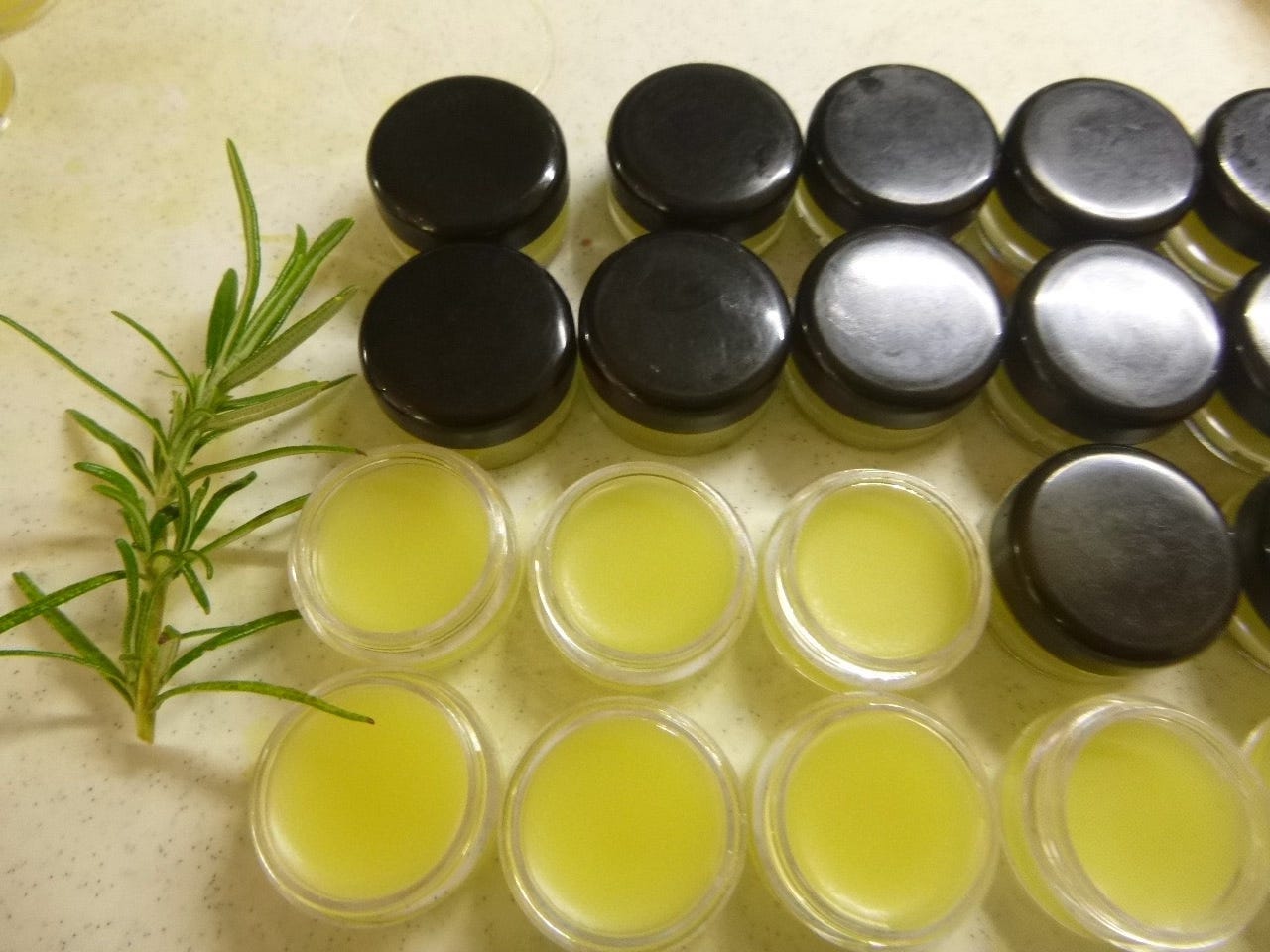MAKING RECIPES #3 Making aromatic herb balms
Balms from the forest garden based on infused and essential oils
I love the idea of balms, they provide an amazing opportunity to experiment with herbs, especially aromatic and resinous plants that can be infused in oils. Mostly these are softish ointments based on combinations of oils, plant butters and wax. In this post, I give an original marigold ointment recipe and discuss harvesting of marigolds, a way to make a double-infused balm plus a further recipe for rose and marigold lip balm, and more ideas for fragrant balms as insect repellents.
What is a balm?
We probably think of a balm as an aromatic oil or ointment. Actually, the meaning of the word 'balm' seems to be a bit variable. It can be used to describe a 'fragrant cream' or even a 'lotion' that 'soothes the skin'. Or a balm can be more of a concept label as something that 'just makes you feel better'. However, in the past, the notion of a balm was strongly linked to its healing potential for all manner of illnesses (Truitt, 2009). It was originally an aromatic substance, largely resin mixed with volatile oils, harvested from various tropical trees, and highly sought after for its fragrance and medicinal properties. Although balm can still be used to refer to an oily resin, it is now more likely to be regarded as part of skin care and considered something of a 'soft ointment with a pleasant smell'. Such a preparation will warm on the skin and melt and become spreadable, often readily absorbed. From my point of view the making of a balm offers a great opportunity to bring together fats or waxes with seed or nut oils and aromatic plant extracts.
Marigold ointment in the making
Many years ago, I was in a group of students of herbal medicine, and we were gifted a recipe for marigold ointment by our tutor. We were together for a herbal remedy making day in someone's kitchen. The memory of the excitement and discovery of plant remedies is still with me even though the details have faded somewhat. It was such a long time ago that I have lost the contributor, but I will be ever grateful since this recipe helped to launch my interest in herbal 'making'. I have made this ointment countless times. It is also known as calendula balm. Over the years I have adapted the list of ingredients somewhat.
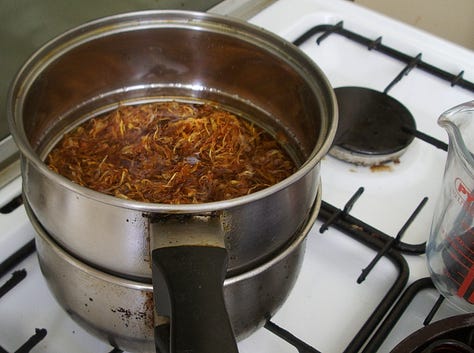
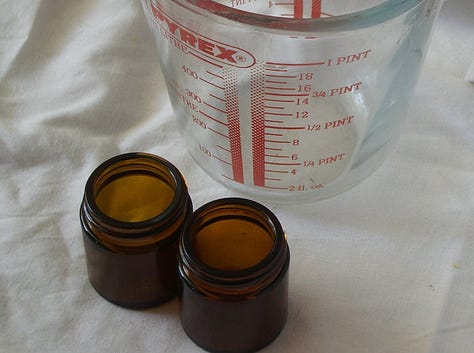
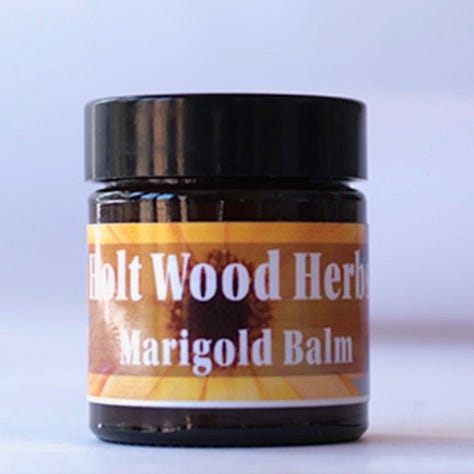
Equipment for making balms
You can make most balms with kitchen utensils such as saucepan, bowl and wooden spoon, heat-resistant glass measuring jug, whisk and a sieve. In addition, for infusing herbs you will need a source of muslin cloth, or use a tea towel that is washable, for pressing out hot oils from the plant material. There are some useful pieces of equipment that I have acquired which include a bain-marie (or double boiler) and an electric whisk. Essentially the bain-marie involves a container placed above heated water in a pan, and gives a steady gentle heat which is ideal for warming and melting solid fats and waxes. An alternative is to place a glass bowl in a pan part filled with heated water. The electric whisk simply saves time and effort.

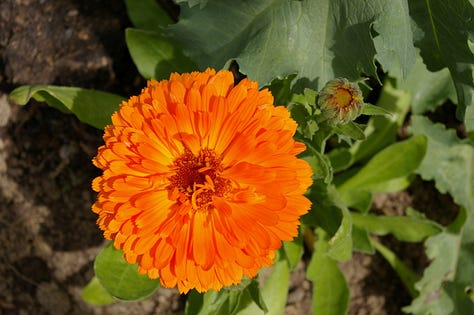

Recipe for marigold ointment
150 g cocoa butter
200 ml sunflower oil
50 g beeswax
20 g dried marigold (Calendula officinalis) petals
2 ml (40 drops) lavender essential oil
Makes 12x 30 ml jars
In a bain-marie (or a bowl in a saucepan of hot water) add the cocoa butter and sunflower oil and stir till the butter and oil have melted together. Then grate the beeswax and add this to the mixture, stirring well till dissolved. Mix in the marigold petals and heat gently for up to an hour, occasionally stirring and checking that there is water in the bain-marie or saucepan. Then strain the marigold mixture through muslin into a warmed glass jug. Stir in the lavender essential oil. Pour the mixture into 30 ml jars and allow to cool. Add lids and labels. The addition of the lavender essential oil helps to preserve the ointment which should be used within 4-6 months.
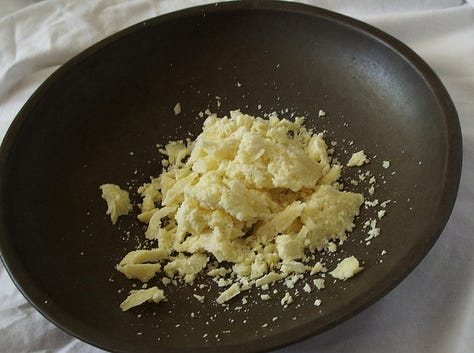
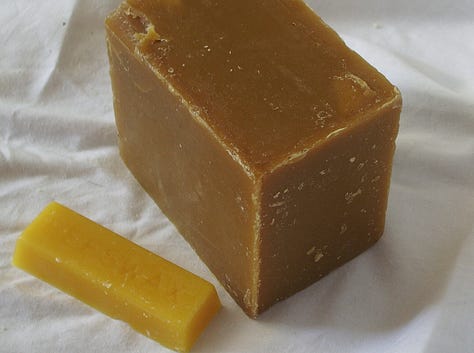
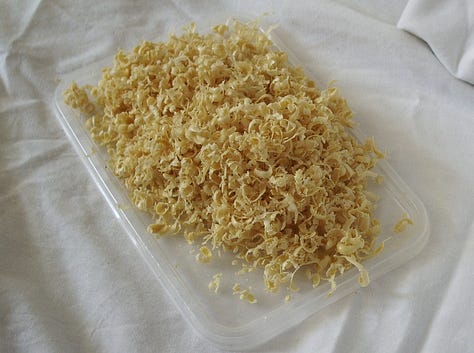
Making double-infused marigold balm
The recipe for marigold ointment does benefit from using an oil that is already infused in marigold petals, effectively this produces a double infusion in the final product.
Keep reading with a 7-day free trial
Subscribe to Medicinal Tree Woman to keep reading this post and get 7 days of free access to the full post archives.





